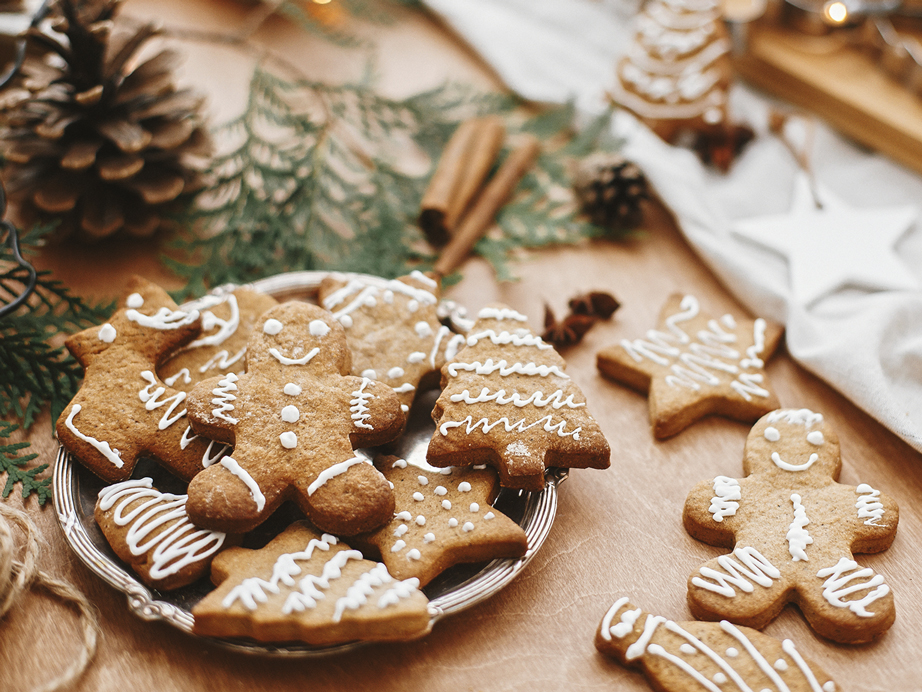As the festive season is almost upon us, it is hard to imagine a confection more celebrated than gingerbread. The monk Gregory of Nicopolis from today’s Western Greece brought this treat to Europe in 992 AD. It was a kind of sweet cake, and it contained spices and honey.
Fairy tales and modern animations are dedicated to gingerbread
No Christmas is complete without a gingerbread man or house, the absolute favourites of all children.
Prominently featured in one of the most successful enterprises of DreamWorks Animation, “Shrek”, a gingerbread man named Gingy has indeed won our hearts. And it undoubtedly contributed to the rise in revenue for bakeries worldwide.
A few centuries earlier, the brothers Grimm wrote the “Hansel and Gretel” fairy tale which drew attention to the gingerbread house. It became a popular and sought-after item, promising hours of fun and festivity. For many children and grownups, assembling gingerbread houses for Christmas became a favourite tradition.
Some of the extraordinary variations of gingerbread
But the world of gingerbread does not end with just the gingerbread man and gingerbread house. While the dough for the biscuits is traditionally made with spice, sugar and breadcrumbs, many chefs have experimented with adding items like flour, honey and eggs. The result is a softer version of gingerbread.
In the US, for example, gingerbread reminds of a treacle cake and can sometimes be served warm with a scoop of ice cream. But German lebkuchen and Russian pryanik have a unique crumbly texture covered in glaze.
Gingerbread can be made with just a handful of ingredients, yet many would go to a length decorating their creations. Even as gingerbread has been known to Europeans since the 10th century, baking and decorating it has evolved over time.
It was Queen Elizabeth I who presented her friends and visiting nobility with intricately decorated gingerbread men. Across Western and Eastern Europe, gingerbread was put into specially crafted moulds, which allowed the final product to resemble a postcard.
Want to craft your very own unique gingerbread goodies?
In the 17th century, masters from Tula, Russia, crafted pryaniks of a particular distinction. Filled with jam and glazed with sugar, the pryaniks looked like postcards. If you can get hold of wooden moulds, try this easy gingerbread recipe. Even without the moulds, the result is delicious and tastes like Christmas itself.
Ingredients:
- 300 g / 2 ½ cups rye flour
- 300 g / 2 ½ cups all-purpose white flour
- 1 tsp baking powder
- 1 tsp ground nutmeg
- 1 tsp ground coriander
- 1 tsp ground cinnamon
- 1 tsp ground clove
- 100 g / ½ cup of butter
- 400 g / 1 ¼ cup buckwheat honey
- 1 egg
- cooking oil
- jam
- 150 g / ¾ cup sugar
Preparation:
- In a bowl, sift the rye flour and all-purpose white flour. Add the baking powder, ground nutmeg, coriander, cinnamon and clove. Mix these ingredients well.
- Melt the butter and buckwheat honey in a thick-walled pan over low-medium heat. Once the mix is homogeneous, which should take about 5 minutes, remove it from the stove and let it cool.
- Break the egg into the flour and spice mixture and rub it in. Pour the honey and butter mixture into the dry ingredients and mix the dough until it becomes playable, resembling playdough in consistency. Wrap it in a cling film and set aside for 30 minutes.
- Preheat the oven to 200 °C / 392 °F.
- Oil the moulds if using them.
- Take some gingerbread dough and start filling the moulds to half their depth. Then spread a layer of jam or dulce de leche over the dough in the moulds. Cover the spread with more dough, filling the mould to the brim. Use a rolling pin to even out the dough. Carefully remove the gingerbread from the moulds and place it on an oiled and lined baking tray. (If you are not using moulds, roll your dough to a 7 mm / 0.3 thick layer to fit into an oiled and lined baking tin. Spread dulce de leche or jam over the dough and cover it with another layer of dough, rolled to the same thickness. You can cut the big gingerbread slab into pieces later.)
- Bake for 10-15 minutes. Remove the gingerbread from the oven and let it cool completely.
- In the meantime, prepare the glaze by dissolving the sugar in 50 g / ¼ cup of water over medium heat for 5 minutes. It works as a preservative, allowing the gingerbread to stay fresh for longer.
- Once ready, let the glaze cool for 5 minutes and brush the gingerbread with it on both sides. Allow the glaze to set by leaving the gingerbread to dry on a wire rack.
Gingerbread can then be stored in a cool, dry place for up to 3 months.











What do you think?